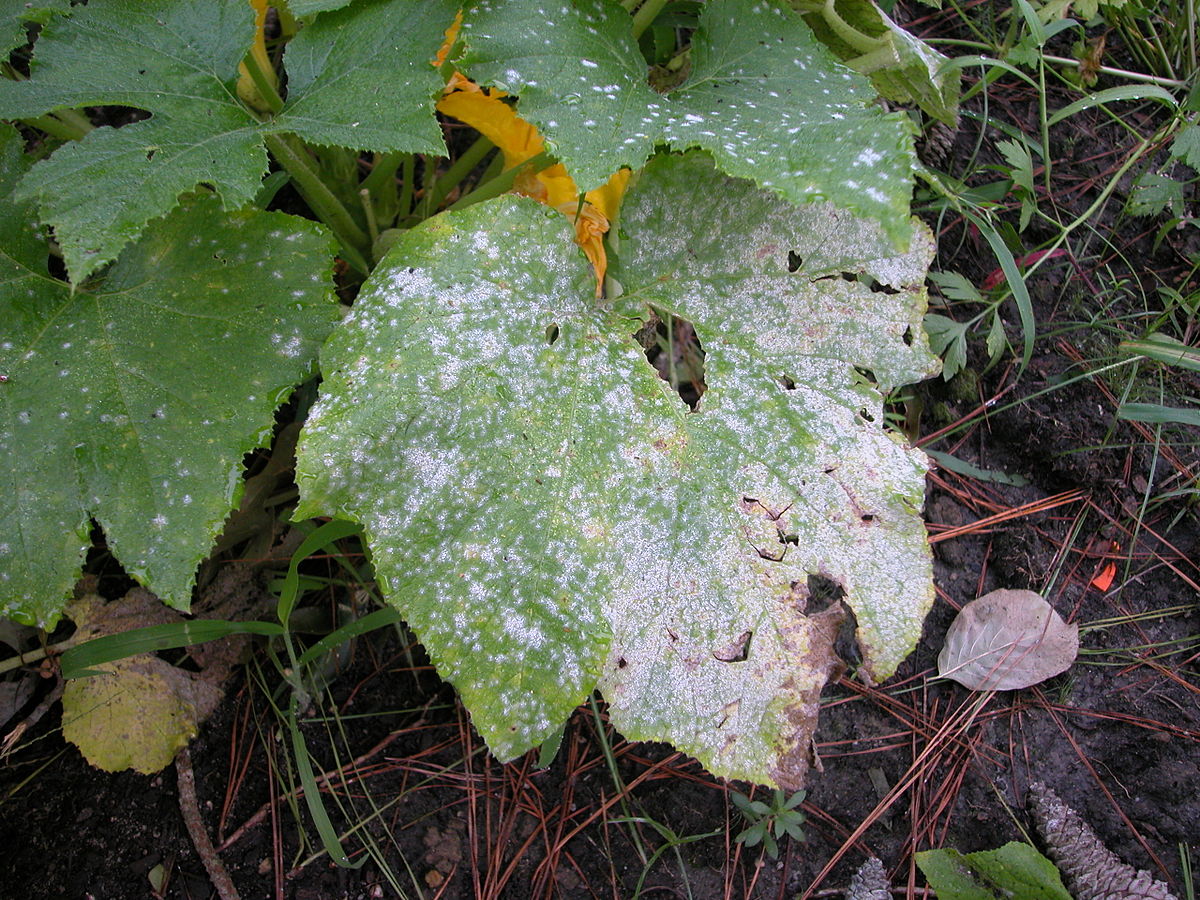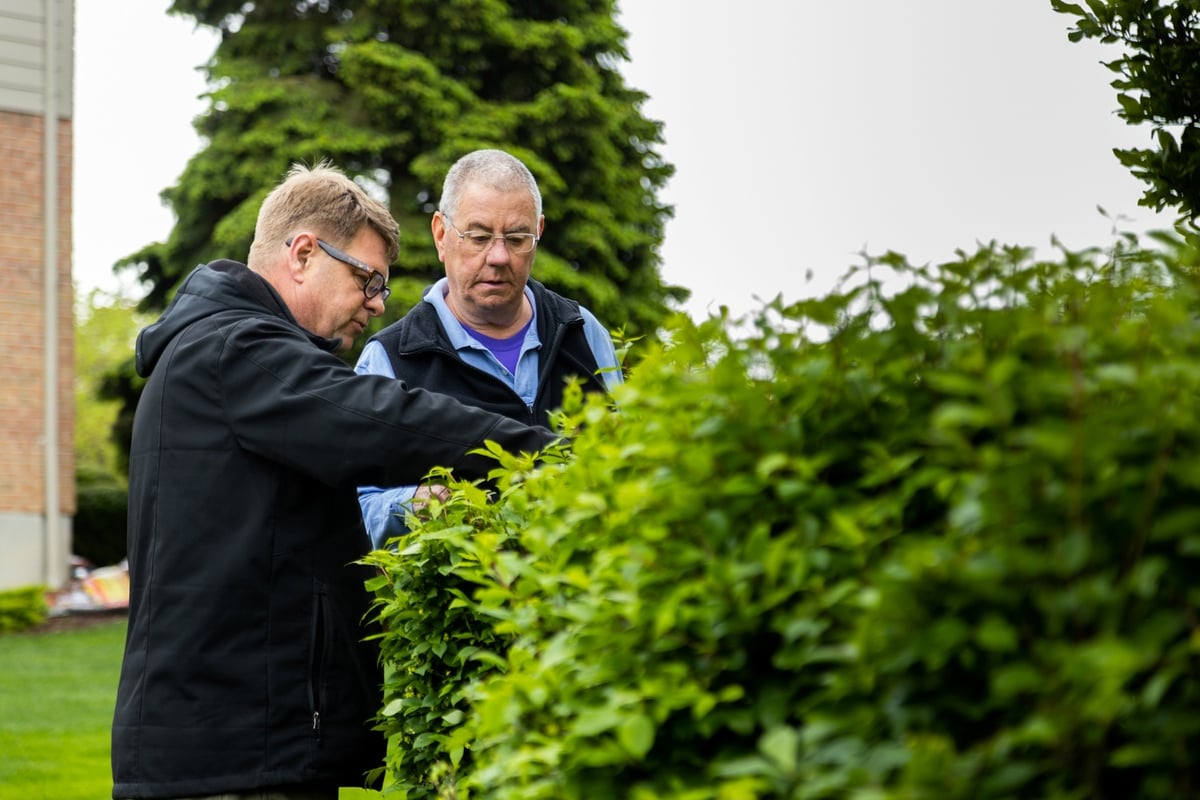Your landscape plants are a valuable part of your property and you want to do what you can to protect them. But just like your lawn, your landscape can be subject to a number of different diseases that can wreak havoc.
One such disease is powdery mildew on plants.
This disease gets its name from the powdery white substance that appears on the infected surface of the plant’s leaves. Homeowners have said that it looked like their plants were “dusted with flour.”
Those white spots of powder can spread to cover more leaves over time.
In this article, we’ll talk about how to deal with powdery mildew so that you can get back to enjoying your landscape.
What Causes Powdery Mildew
Powdery mildew is caused by tiny fungal spores that grow rapidly when the conditions are “just right” for that growth. This comes down to something that we’ve mentioned before called the “Disease Triangle”

In order for a plant disease to develop and spread, there are three factors that must be present:
- A suitable environment (the weather conditions)
- A disease pathogen
- A susceptible host plant (different plants are going to be more susceptible to different diseases)
When the fungus of powdery mildew takes over a plant, the spores can also be carried to other susceptible plants in the landscape. It can eventually lead to leaf yellowing, browning, distortion, and premature drop.
You might also find that the buds and growing tips of your plant become disfigured over time.
How to Treat Powdery Mildew on Plants
While there are fungicides to be used as powdery mildew treatment, our stance is that fungicides are generally too expensive to be worth it. In addition to being very costly, fungicides also do not correct any damage that was already done.
They only prevent the disease from spreading further.
Instead, we typically make cultural recommendations when we find powdery mildew on plants.

For one, you can prune off infected areas. Make sure that the diseased plant material is removed properly. Leaving it on the ground will only allow the disease to spread back to your plant (and others around it).
Once you’ve pruned infected plants, don’t allow your shears to touch any healthy leaves. Be sure to sanitize them with something like rubbing alcohol.
It’s also important to note that choices made during planting can have an impact. Plants that don’t get enough sun or are planted in consistently soggy soil might be more prone to powdery mildew (and other fungal infections). If your plant is constantly having problems, it might make sense to replace it with something that is better suited to the area it is planted.
How to Get Rid of Powdery Mildew on Plants
Pruning affected plant material and making wiser plant choices are two key ways to address this problem.
In addition, because weather conditions really do play a huge role in disease development, you might notice that when the weather changes, your plant problems begin to fade. Sometimes homeowners get really upset about the condition of their plants only to realize that it improves when the weather changes.
For instance, when we stop having a lot of rainy days in a row in Cincinnati and plants can dry out.
Going forward, you can also do more to protect your plants with a proactive Tree & Shrub Health Care program.
While there are always going to be problems in the landscape, a plant that is well-cared for will do better at resisting problems like disease…as well as pests, and environmental stressors.
In addition to getting regular plant treatments, you’ll also gain the peace of mind that a trained Tree and Shrub Technician will be on your property, examining your plants. This professional can make additional cultural recommendations based on potential problems that they see. Often, spotting problems early is a key to success.
Problems like powdery mildew on plants will always be a source of stress. But with an ongoing eye on your property, it will no longer have to be your worry.
If you want to find out more about tree and shrub health care for your Cincinnati, Dayton, OH, or Northern Kentucky home, call us today at 513-697-9090 to get your quote, let us help you choose a stand-alone Plant Health Care program or bundle it with other valuable services, then sit back and relax knowing that your trees and shrubs are in good hands.
Image Source: Powdery Mildew
